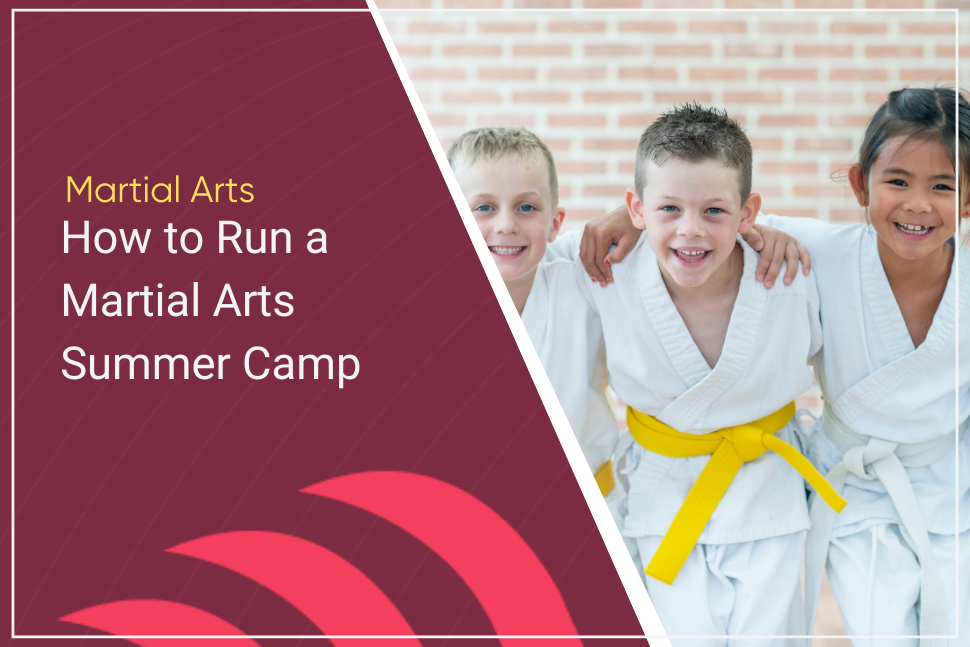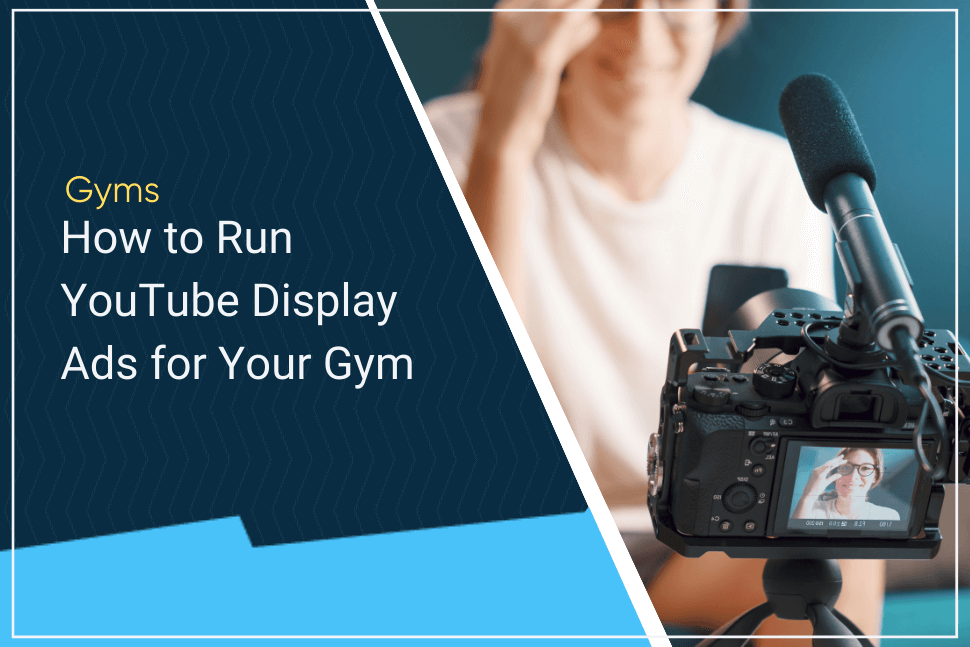You want more kids in your summer camp.
You’re running a martial arts school and you’re hosting a summer camp; you’re nervous—what if you can’t fill the spots? Perhaps you’ve already begun promoting your camp, but you’re not seeing the enrollment you expected.
Not to worry.
It’s all about putting the right marketing strategy and tactics in place—the right target audience, consistent community outreach, and reliable digital tactics. Once you have these, you’ll be able to position your martial arts summer camp as a must-have for families in your community.
Here’s how you do it.
Step #1: Set up your Martial Arts Summer Camp
Let’s start with the big questions about your summer camp; these are the big ones families expect you to answer. Here are three of the biggest questions.
- What are you offering?
- What problem does your offer solve?
- Why should I join your camp?
These questions seem straightforward, but it’s surprising how often they are ignored. These questions aren’t difficult to answer, but you do need thorough answers to these questions.
Here’s an example.
Offer: A Mixed Martial Arts Summer Camp
This two-month summer camp offers high-level instruction from a variety of professional fighters. We’ll help your kids grow self confidence and develop beginner, intermediate, and advanced skills across various martial arts disciplines, showing them how to:
- Build an ironclad defense so they’re (very) hard to hit
- Create offensive systems your kids can use to set traps, counter, and dominate
- Use submissions, strikes, and takedowns interchangeably
- Quickly exhaust opponents so you always have an advantage
- Use anti-grappling, anti-judo, and anti-striking to defeat high-level specialists
Okay, so that’s a pretty good offer for an MMA martial arts summer camp. What problem does this promotion solve?
Problem Solving: What Problem Does This Offer Solve?
This next section defines your audience and outlines the specific problems your offer solves.
This camp is perfect for three kinds of new students.
- You have zero martial arts training, but you need to build high-level skills fast.
- You’re a specialist (e.g., wrestler, judoka, kickboxer), but you don’t have any other skills.
- You don’t know how to set traps, create dilemmas, or create physical distress
Feel like you’re not as capable as you want to be? If you’re struggling to keep up with the other kids in your class or you aren’t performing the way you’d like to be, this summer camp session could be just what you need.
See what I did there?
I defined the audience and I built the problems they’re already facing into the description (e.g., you’re a specialist but you can’t do anything else, you have zero martial arts training but you need skills yesterday). Now we’re ready to build our value proposition.
Value Proposition: Why Should I Join Your Camp?
When it comes to martial arts studios and promoting your summer camp, a compelling value proposition is typically focused on one of four areas.
- Proprietary know-how: You know something others don’t. You have a unique system, process, or workflow that enables you to get results that others can’t.
- Connections: You have connections with the right people; you use those connections in a way that benefits your students. That’s significant because connections take a lot of time to develop, and they can be lost in an instant.
- A proven track record: Your gym has a proven track record of producing champions, elite-level athletes, or Olympians. Your gym produces consistent results, and your current and former students are a testament to your skills and ability to lead.
- Training methodology: You know how to help others achieve results, and your training methodology proves it. You can work with students of all levels, including beginners, intermediates, and advanced students.
Your value proposition is a promise that shows that you can do what others can’t (or won’t) do. Your value proposition should be appealing (to families), exclusive to you, clear, and credible.
Here’s an example:
Come train with UFC legends Bas Rutten and Uriah Faber. When you attend this year’s MMA Camp, you’ll get:
- Hands-on instruction from 5 World champions and 16 elite-level fighters.
- Get step-by-step instructions showing you how to fight like the best.
- Immediate access to our online training library, filled with lessons from our past camps with high-level fighters.
- Exclusive priority access to future events, workshops, and instructionals. This offer is only available to current students and alumni.
Our summer camp is a fun and engaging atmosphere that encourages kids to learn, take risks, experiment, and grow. Our program is designed to help students of all skill levels build significant skills in a relatively short period of time.
Can you see what’s happening?
I’ve just shown families why this summer camp is the best one for their kids. We’ve created a value proposition that’s appealing, exclusive, clear, and credible. It’s an absolute win for everyone.
What about planning and preparation?
The usual steps apply here.
You’ll want to determine the overall length of your summer camp. Your budget (including pre-sales) will have a significant impact on the expenses you can cover, the staff available to support you, and the resources you’ll need to have on hand (e.g., renting extra cages, purchasing extra gloves and shin pads, etc.).
You’ll want to identify the budget you have for third parties and work with them to develop a curriculum. This needs to be developed ahead of time so you have time, three to four months, to aggressively market your business.
Don’t forget about customer service.
You’ll need a plan for customer support. Customer support should be available on day one. When you begin pre-selling seats for your camp. Determine how you’ll offer support (e.g., chat, phone, email, help desk) and make it available as soon as you open your doors.
Wait a minute.
You’ve done the work, and you’ve started promoting your martial arts summer camp. How are you supposed to get the word out and encourage families to enroll their kids?
Why, with great marketing! Here are some strategies and tactics you can use to promote your martial arts summer camp.
Step #2: Marketing Strategies for Martial Arts Schools
This is a seasonal event. Your summer camp isn’t an evergreen thing. Believe it or not, this gives you a tremendous amount of marketing leverage.
I’m talking about urgency triggers.
Urgency triggers motivate families to take action immediately. If you’ve done a great job selecting your target audience, you’ll find these special strategies work extremely well. Here are a few ways you can instill a (legitimate) sense of urgency in your customers.
- Bonuses. Register by [certain date] and you’ll receive [free product, discount, etc.].
- Takeaways. Only [12] seats left for this year’s camp. Reserve your seat before it’s too late!
- Loss aversion timer. This early bird discount goes away in [2 days, 12 hrs, 41 min.].
- Contest. The first 50 new students to pass this test win a one-on-one personal with Bas Rutten!
- Invite/vip only. If you’re a camp alumnus and you register before [certain date], you’ll receive these free [products, bonuses, freebies] with your order.
- Join the waitlist. Register for this year’s camp and you’ll be added to the priority waitlist for our [desirable bonus or incentive].
- Bundled opt-in. Register for a premium seat and you’ll also receive this [product or bonus] free with your order.
Why do these tactics work? They train families, showing them that it’s important to pay close attention to avoid missing out. It’s an excellent tactic that helps to boost average order values across the board.
But only if it’s used honestly.
If you use urgency triggers dishonestly, your customers will never trust you again (and rightfully so).
Paid Advertising Strategies to Promote Your Camp
Paid advertising will play a significant role in your summer camp marketing. Generally speaking, you don’t have time to wait for organic or local search engine optimization. If you’ve started promoting this three to four months out, you’re going to need three things from your paid advertising:
- Traffic: A steady supply of clicks/visits from your target audience (families with a strong interest in your martial arts). Your ad targeting should be incredibly precise and focused on families with the right demographics and psychographics.
- Conversion: You need a landing page that’s designed to do two things well: (1.) generate leads, it’s a good idea to capture the email addresses of those who aren’t ready to buy today; (2.) Generate sales/registrations from those who are ready and willing to buy.
You can still use the 60-30-10 strategy I mentioned in my previous post. It just needs to work within a shorter time horizon. Here are some compelling options you can use in your paid advertising campaigns:
- Create content that solves one of the core problems you’ve found in the research phase. In this post, I mentioned three (e.g., (1.) zero training, learn fast (2.), specialist with skills gaps, and (3.) people of all skill levels who need advanced skills.
- Use the GaryVee content model. Create long-form content, then break it up into short-form content, reels, and shorts. Create content that addresses the core problems of your target audience. Just enough content to be useful, not so much that families don’t want to enroll.
If you’re creating video content for platforms like YouTube, here’s an important detail you’ll want to take note of. First, embedded YouTube videos typically count towards the total view count of a video. Not so much if your videos are autoplayed, embedded as a background element, or there are multiple views from the same device in a short period of time.
TL; DR. Don’t try to game the system. - Embed this content on your landing page; this boosts views, traffic, and discoverability of your videos on their native platforms (e.g., YouTube, Instagram, Facebook, etc.). It also boosts your conversion rate on your landing pages.
What if your paid advertising was free?
Hear me out.
If you know your break-even cost per click, you’ll be able to create a product that helps you defray the cost of advertising or even pay you to advertise.
Here’s how you make that happen.
- Identify your break-even cost per lead. This is the maximum amount you’re able to spend on paid advertising to acquire a lead without losing money.
- Create a conversion landing page that’s oriented around a single goal (e.g., opt-in, registration, purchase, etc.).
- Create a low-cost, entry-level product that your audience wants. This is a backend offer that’s presented after customers convert on your landing page. This offer is designed to generate revenue.
- Price your product appropriately so it covers the cost of your advertising campaign. The goal is simple: generate enough revenue to cover the cost of your paid advertising campaign.
What sort of products are you looking to sell?
- Gear signed by the celebrity, influencer, or fighter teaching at your workshop.
- Massive early bird discounts on instructional materials.
- Camp merch that’s offered at a discount, comes with a bonus, or is designed to create value for camp attendees
- Offer discounted or free classes and trials for new students.
The sky’s the limit.
If you handle this properly, you’ll be able to create advertising campaigns that are consistent and profitable, leading to maximum enrollment.
Email Marketing Strategies to Promote Your Camp
There’s a simple way you can create emails that attract parents and children (and their friends!) to your martial arts summer camp. You use broadcast emails with special offers and autoresponder sequences to figure out what works.
Here’s how it works.
Broadcast emails are single-use, one-time messages that are sent when you click “send.” You can use broadcast emails to identify the factors that have the greatest impact on your summer camp revenue. These factors include subject lines, message frequency, wording, and call-to-action, among others.
Once you’ve identified the elements in your email that drive additional revenue, you automate them. You can turn them into automated messages that are sent out automatically on a schedule as part of your autoresponder sequence.
Direct Response and Traditional Marketing Tactics
I hate junk mail. You probably do too.
What if there were a way to create a direct-response campaign that people actually find interesting? Believe it or not, you already have what you need to do that. Remember the 60-30-10 strategy I mentioned earlier? We’re going to use that.
Here’s how it works.
With 60-30-10, you spend 10% of your budget on cold traffic, 30% on warm, and 60% on hot traffic. You’re going to use direct mail to reach out to your warm and hot traffic.
But wait, there’s more.
You’re going to use your digital marketing to identify the ads and content that work best (e.g., your display ads or Facebook ads). From there, you’ll want to convert your best-performing ads to direct mail.
Here’s what you’ll need to make this happen.
- An irresistible offer that’s appealing, exclusive, credible, and clear.
- Urgency triggers that motivate parents to take action now.
- QR codes that bring them back to your website, allowing you to send them more amazing content.
Did you catch that?
You’re not sending junk mail to random strangers; you’re sending an irresistible offer to “hot leads” parents (and children) who have already expressed an interest in working with you.
Use the format that works best for you—postcards, flyers, or brochures—then send your marketing pieces to the hot leads you cultivated online. Reach out to low-cost printers like VistaPrint or Mixam to create direct-response content. Distribute your marketing materials in schools, after-school programs, local community centers, and partner businesses.
Step #3. Partner with Community Centers and Local Schools
Can you attract locals effortlessly?
Is there a way to partner with locals in the community and local schools, maximizing student enrollment in your martial arts summer camp?
Absolutely. You do it by serving.
You serve complementary partners. These are local community members with an established wider audience. Individuals, businesses, or organizations – it doesn’t really matter. You’re looking for organizations that serve the same families you’re working to attract.
Then you serve them.
Here are five frameworks you can use to partner with locals in your community.
- Teach what you know: Use this strategy to approach partners who have an audience but aren’t teaching what you already know.
- Give what you have: If you’re a coach, teacher, instructor, or guide, find locals in the community who want what you have to offer.
- Protect from harm: With this strategy, you can expose people, events, and circumstances that put families at risk. You can also show partners why they’re struggling to solve a specific problem.
- Act as a connector: You can create value by creating connections with people, locals, and community organizations. Seed the relationships with your ideas, then capture a percentage of the value you create.
- Provoke with care: You can pick a fight—select people, organizations, or industry standards as your target. Identify and point out areas of weakness, then show how you’d address or correct the problem.
How do you get locals to partner with you?
- Select the review profiles with the most visibility and impact for your martial arts camp (e.g., Yelp, TripAdvisor, Google Reviews, etc.).
- Build a strong review portfolio by requesting reviews from families who attended your camp the previous year. What if this is your first year? Focus your attention on pre-selling. If you already have a martial arts studio, share the reviews you have from happy customers.
- Give schools and community organizations something of value, then capture a percentage of that value. Offer free day and weekend passes to schools and organizations. Give specific clubs or organizations exclusive access on specific days or at specific times. Do your best to wow each family.
- Require email, text, or social media opt-ins to redeem the incentives and rewards you’re offering. Use this to build your list. Then, use the strategies and tactics I mentioned above in the email section to generate sales and revenue when it’s time to pre-sell for your martial arts camp!
- Request reviews from partnership participants and their families. Repeat steps 2 – 5.
Community partnerships bring in families who are eager to enroll in your program. Serve them well and you’ll attract attention, praise, and support from well-known locals in the community.
Step #4. Tracking and Evaluation: Measuring the Success of Your Marketing Efforts
You’re promoting your martial arts summer camp.
What’s the worst that can happen?
You pour your time and attention into a marketing and advertising campaign that doesn’t work. Your enrollment is disappointing, and your summer camp is a flop.
This is the absolute worst-case scenario, isn’t it?
Metrics and key performance indicators (KPIs) prevent that. With the right metrics, you’ll be able to identify which marketing channels work best for your business. If you’re going to measure the success of your marketing efforts, you’ll want to identify the metrics and KPIs that matter.
Here’s a short list.
- Total clickthrough rate
- Total visits/unique visits
- Total leads
- Cost-per-lead
- Lead source breakdown
- Conversion rate
- Return on Ad Spend (RoAS)
- Attendance rate
- Revenue per student
- Total campaign revenue
- Retention rate (post-camp)
- Customer satisfaction score
- Social media engagement
- Email open and click rates
- Aggregate reviews
Use these metrics and KPIs to measure the effectiveness of your marketing campaign. Pair this quantitative data with qualitative data (e.g., quizzes, surveys, or feedback sessions) to gather performance data from families. Use the data you’ve collected to make mid-campaign adjustments and improve retention.
Use These Ideas to Maximize Camp Enrollment
You want more kids in your summer camp.
You’re running a martial arts summer camp, and you’re nervous—what if you can’t fill the spots? Perhaps you’ve already begun promoting your camp, but you’re not seeing the enrollment you expected.
Not to worry.
Use these marketing tactics to increase new student enrollment. Focus on the fundamentals—the right target audience, consistent community outreach, reliable digital tactics, and solid traditional marketing. Start consistently, and you’ll find you’re able to position your martial arts summer camp as a must-have for families in your community.
 Gym Owner Statistics: The State of Gyms, Member Trends, and Usage Data
Gym Owner Statistics: The State of Gyms, Member Trends, and Usage Data



